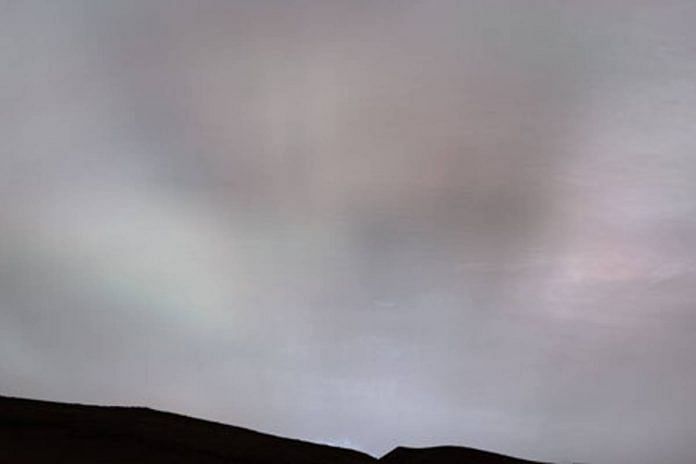New Delhi: NASA Monday released images of a Martian sunset captured by the space organisaton’s Curiosity rover last month, calling it the first image of sun rays “being so clearly viewed on Mars”. The sun rays, also known as crepuscular rays, from the Latin word for “twilight”, were captured by Curiosity on 2 February, as the rays of the setting Sun lit up a bank of clouds.
Launched in 2011, Curiosity had earlier, in 2021, captured images of noctilucent, or night-shining, clouds and last month’s images are part of a follow-up twilight cloud survey, which commenced in January this year and will continue till mid-March, said NASA.
Most Martian clouds hover roughly 60 kilometers above the ground, and are made of water ice. But in the latest images, the clouds seem to be at a much higher altitude, hovering in extremely cold temperatures, suggesting that the clouds are made of carbon dioxide ice, or dry ice, the space organisation added.
Commenting on the Curiosity images, Mark Lemmon, an atmospheric scientist with the Space Science Institute in Boulder, Colorado, said, “Where we see iridescence (a rainbow-like vision when exposed to sunlight), it means a cloud’s particle sizes are identical to their neighbors in each part of the cloud”.
Lemmon added: “By looking at color transitions, we’re seeing particle size changing across the cloud. That tells us about the way the cloud is evolving and how its particles are changing size over time.”
Also read: NASA’s InSight rover prepares to join Mars’s robot graveyard — ‘may be last image I send’
What the clouds convey
Studying clouds is vital because it gives scientists adequate information about the weather. In addition, by observing when and where clouds develop, experts may get additional knowledge about the composition of the atmosphere on Mars, temperature, and wind conditions.
While the 2021 survey relied heavily on Curiosity’s black-and-white navigation cameras, the latest survey relies much more on the rover’s colour Mast camera or the Mastcam, built by the Malin Space Science Systems in San Diego, California, informed the NASA release.
The black-and-white images had provided scientists “a detailed look at a cloud’s structure as it moves”, while the colour images help understand how cloud particles grow over time.

On 27 January this year, Curiosity had also captured images of colorful clouds, shaped like a feather.
“Curiosity captured both the sun rays and iridescent clouds as panoramas, each of which was stitched together from 28 images sent to Earth. The images have been processed to emphasize the highlights,” NASA said.
(Edited by Poulomi Banerjee)
Also read: 5-minute flight, 2 Indian & 1 foreign payloads — India launches first private rocket




